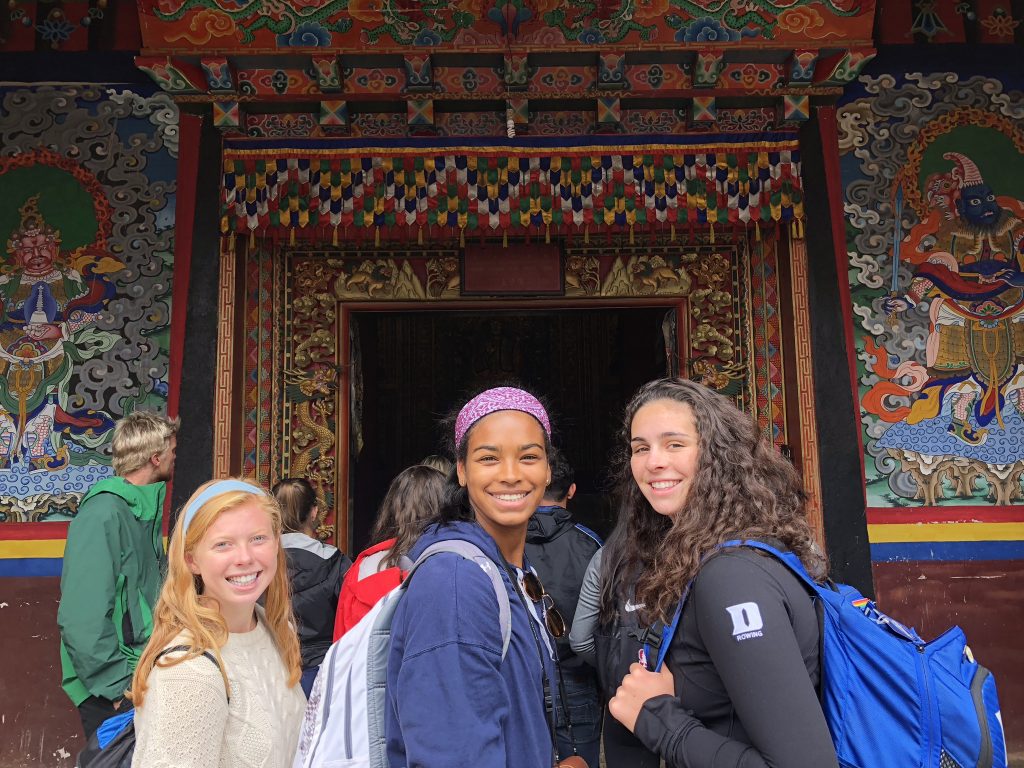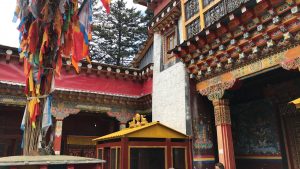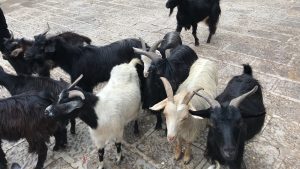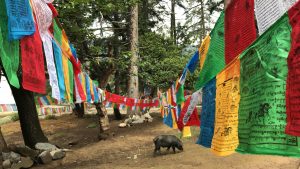
Four days after arriving in Shangri-La, China, we took a trip to a local monastery about an hour from the CERS Center where we have been staying. There were several stages of our visit starting with a ritual burning of pine branches in the Juniper and the hanging of a prayer flag.

Next, we ascended several flights of stairs lined with the same prayer wheels that we have been seeing all around town.

As soon as we reached the entrance to the monastery we were greeted by about twenty goats and a few pigs who seemed to think that we had food to give them.

However, I was immediately struck by the beauty of the monastery and the immense amount of detail in its architecture. Each doorway was covered in ornate wood carvings with delicate patterns of dragons or flowers. The thangka paintings, however, were the most impressive by far. Thangka is a style of painting used to depict the different deities showing their stories and the history of Tibetan Buddhism. It is a very precise art form and a lot of time and effort is put into ensuring that the proportions of the deities are correct.

Inside of the assembly hall we observed the even more elaborate paintings, a large statue of Tsongkhapa, the founder of the Geluk school of Buddhism, and many images of different lamas placed around the room.
Lastly, we took a walk around the courtyard outside of the buildings through a huge span of prayer flags. The vibrant colors and sheer number of them was overwhelmingly beautiful.

Overall, it was an incredible experience to see the beauty and to learn more about the tradition and history of Tibetan Buddhism.
